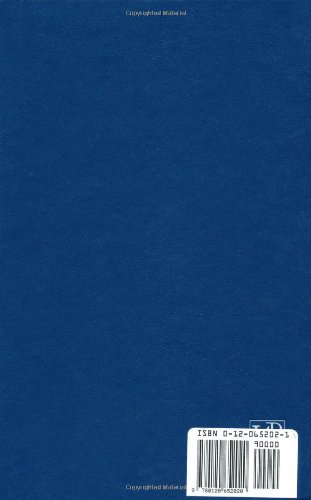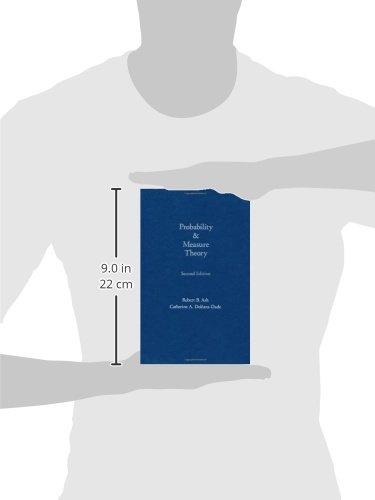



Probability and Measure Theory
H**R
Extremely readable
This was the fourth book I tried when I attempted to give myself an introduction to the Lebesgue integral. I found it to be, by far, the most accessible among them. It is written in a very clear style that is easy to read (well, as far as mathematics texts go), which is certainly not a property shared by all books on this subject. Anyone with a little patience and a basic introduction to epsilons and deltas should be able to successfully tackle this book.The fact that the book goes on to develop the theory of probability is an extra bonus: I think this book is worth it just for the first 3 chapters. Although it isn't nearly as thorough as something like Royden, it sets you up with the most important results as quickly as possible, giving you the tools you need to begin thinking in a new way.The problems that I have done are generally of high quality. They illuminate edge cases and help you understand the consequences of the theorems and definitions. Some of the problems have solutions in the back, but it never hurts to have someone knowledgeable you can run your ideas past when you get stuck.
S**N
this book is so great! It has some examples in the beginning few ...
Oh man, this book is so great! It has some examples in the beginning few sections then hardly any as you go along!My class was so engrossed in the material, we were hardly able to make it out of the first chapter by the end of the semester!
W**G
Three Stars
I feel like this book is an international version not like USA quality.
J**Y
Love it.
I have to say this book is really accessible but deep enough!! Love it.
C**O
Good
The information in this book is so concise. The first two chapters are good for measure and integration theory.
M**E
Five Stars
Great book!
F**Z
Excellent and rigurous
This book deal with the whole picture of probability. One learns the very first roots of rigurous probability. And when I say rigurous I am not regarding it as "engineers rigour = nothing" but as "mathematicians rigour". The book is self-contained, the exposition is clear and is organized in the mathematic classical fashion: definition, lema, proof, theorem, proof.That rigour, when it comes to probability beyond "number of successful cases / total number of cases", can only be achieved when the theory is developed in the most general background: measure theory. This gives general tools (theorems) which are applied to measures in general, a particular case of which is probability. Measure theory and general abstract Lebesgue integration go together, so the book defines and deepens in Lebesgue theory: integration, convergence theorems, Fubini's theorem, etc.Once you feel confident and capable of deal with almost anything regarding Lebesgue integration the books moves on relations between integrals and measures: the Radon-Nikodym theorem which is perhaps one of the most important results of the book and whose proof is outstanding. It provides the reader with the tools to tackle Lebesgue almost everywhere differentiation theorem and absolutely continuous measures and functions.Finally, before starting with probability as special case, there is a functional analysis chapter which gives proof of the three most important theorems of functional analisys in Hilbert and Banach spaces.From chapter 4 on, everything about probability is covered. From basic distributions to martingales, ergodicity or central limit theoroem. But instead of making up ad-hoc theorems, theorems proved for measures in first chapters renders the proofs in this stage simply colloralies.Once you read the book you will feel confident about anything touching probability, measure theory and Lebesgue integration and equipped with the most fundamental tools of functional analysis which are used widespread.I couldn't recommend the book more.
G**L
The best introduction to probability and measure
The book very nicely develops the basics of measure theory from a probability perspective (e.g. includes Caratheodory extension theorem, Lebesgue-Stieltjes measures, weak convergence and Kolmogorov extension theorem). It then gives a brief introduction to functional analysis and proceeds to probability theory, martingales and concludes with brownian motion and stochastic integration.All standard results are given and the book is self-contained. It is a concise, yet readable introduction to this area (less concise then Rudin, Williams but more than Billingsly). An excellent feature of this book is that full solutions to some of the exercises are provided at the end. This makes this book ideal for self-study. The only prerequisite for this book is elementary real analysis (say chapters 1-7 of Rudin's principles of mathematical analysis).There are other excellent books on measure theory (Rudin, Royden), but if you are interested in measure theory from a probabilistic view this is the book to choose.As far as a probability textbook, it is clearer and more readable than Billingsly, Chung, Williams and Durrett.
Trustpilot
2 weeks ago
1 day ago